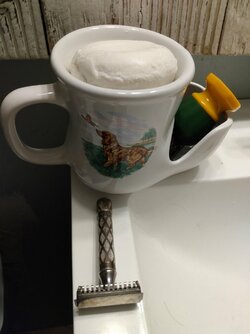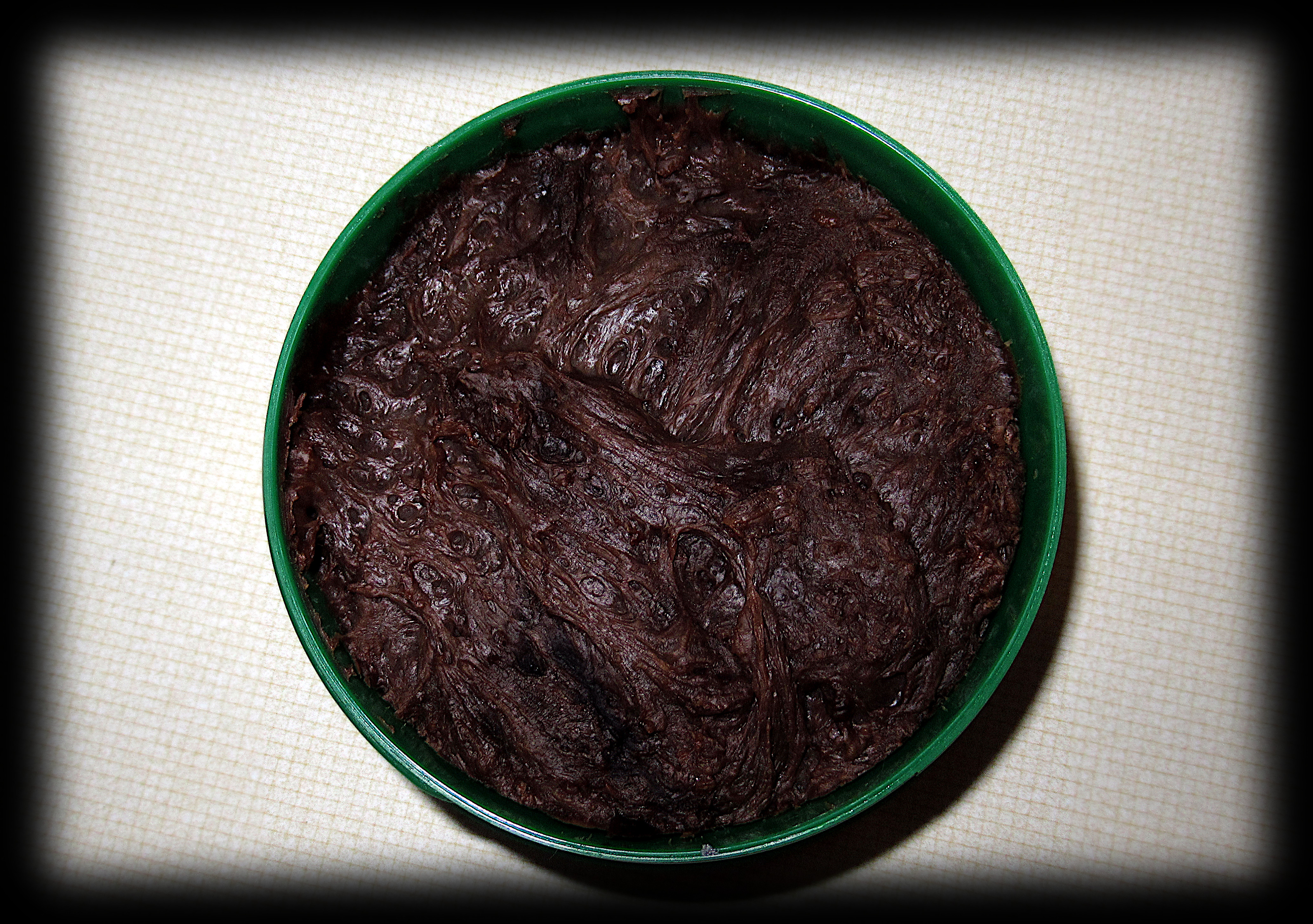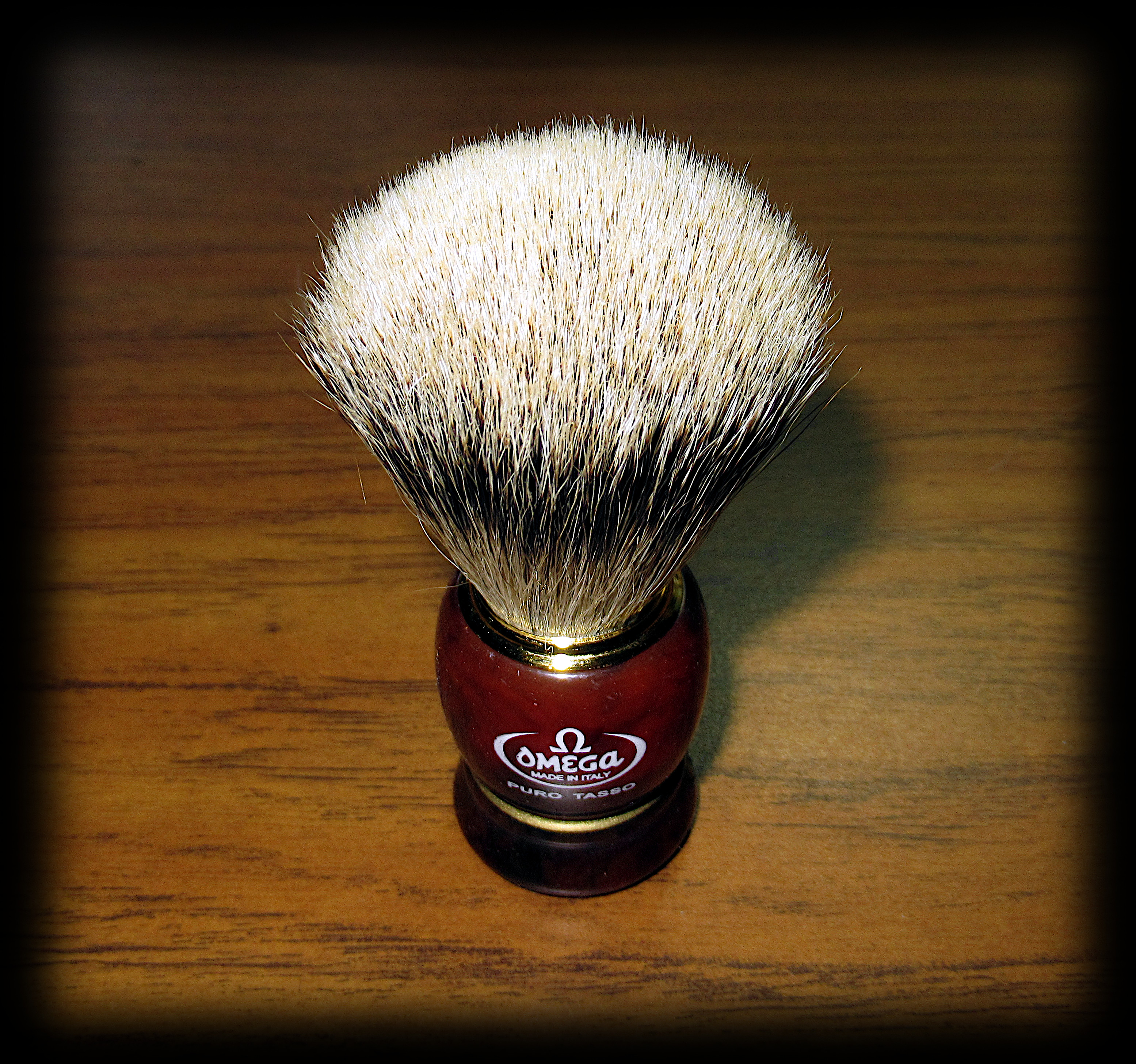So Wisconsin winters are long and cold, and in an effort to keep myself occupied I decided to dig out an antique scuttle from the back of my closet and figure out how to use it.

Now there are lots of theories around the internet and even this forum on how one should be used. Some say you should mash soap in the bowl to load the brush for face lathering, some say it was meant to build lather in the little bowl and the steam rises through the little holes to warm the lather. The most plausible theory was that the soap puck was held in the hand and loaded and then used as a soap dish.
I think these theories are wrong personally. The purpose of a scuttle is to create a warm lather before each pass. And I have figured out a way to do just that. I don't know if it's historically correct, but it works.
So I think one misconception is the brush should be loaded from the soap. I believe the holes in the bottom of the bowl are for drainage, and then the soap should be picked up and rubbed all over the face like a shave stick, then the brush should be taken from the hot water, used to build lather on the face, and then returned to the water to keep warm for the next pass.
I have tried this method the past few days and it works really well. Instead of trying to build all the lather at once and keep it warm like more modern scuttles you simply make hot lather as you need it.
Razor emporium has a video somewhere that they tested how long each type of brush holds heat. If I remember correctly, badger was the best but even then it only held heat for about 30-40 seconds, so having to return the brush to the warm water to reheat while you shave makes sense.
I wasn't alive in the late 1800's/early 1900's, but I'm assuming you needed to heat water in a tea kettle on the wood stove and had a wash basin instead of a sink. Being they didn't have hot tap water on demand, I think building hot lather as needed was the most practical option.
Again, not sure if historically correct, but I did get three warm lathers from my puck of arko, and it's much smaller than modern scuttles too! So that's a bonus if you have a small space.

Now there are lots of theories around the internet and even this forum on how one should be used. Some say you should mash soap in the bowl to load the brush for face lathering, some say it was meant to build lather in the little bowl and the steam rises through the little holes to warm the lather. The most plausible theory was that the soap puck was held in the hand and loaded and then used as a soap dish.
I think these theories are wrong personally. The purpose of a scuttle is to create a warm lather before each pass. And I have figured out a way to do just that. I don't know if it's historically correct, but it works.
So I think one misconception is the brush should be loaded from the soap. I believe the holes in the bottom of the bowl are for drainage, and then the soap should be picked up and rubbed all over the face like a shave stick, then the brush should be taken from the hot water, used to build lather on the face, and then returned to the water to keep warm for the next pass.
I have tried this method the past few days and it works really well. Instead of trying to build all the lather at once and keep it warm like more modern scuttles you simply make hot lather as you need it.
Razor emporium has a video somewhere that they tested how long each type of brush holds heat. If I remember correctly, badger was the best but even then it only held heat for about 30-40 seconds, so having to return the brush to the warm water to reheat while you shave makes sense.
I wasn't alive in the late 1800's/early 1900's, but I'm assuming you needed to heat water in a tea kettle on the wood stove and had a wash basin instead of a sink. Being they didn't have hot tap water on demand, I think building hot lather as needed was the most practical option.
Again, not sure if historically correct, but I did get three warm lathers from my puck of arko, and it's much smaller than modern scuttles too! So that's a bonus if you have a small space.














